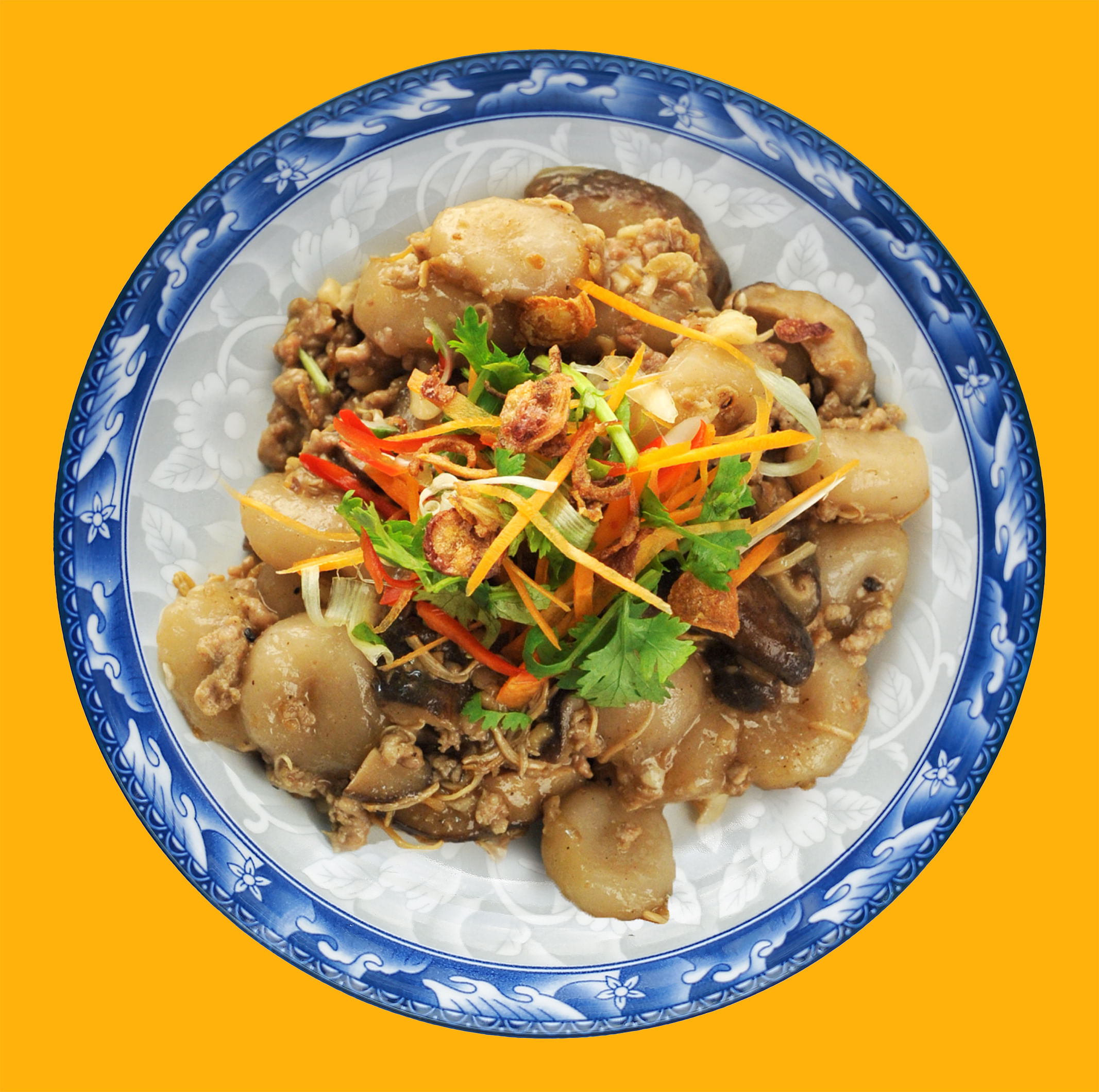Mr Eric Teo, 54, the stall operator of Hougang Jing Jia Mutton Soup at Taman Jurong Market and Food Centre, used to patronise a popular satay bee hoon stall located in the east side of Singapore.
The stall, which was run by an elderly couple, was well-loved for its fragrant Chinese-style satay sauce and skewers of meats, vegetables and seafood that accompanied the main bee hoon dish.
Despite its popularity, Mr Teo says the owners could only operate three days a week due to health issues. Eventually, the tedious preparation process took a toll on them, and they had to sell the business and retire.
Lost with time

To Mr Teo, this was a common thread through the many stories of disappearing hawker food. Besides satay bee hoon, other dishes that are seemingly getting harder to find include Fuzhou oyster cakes, tau kwa pau, appam, roti jala and yam abacus seeds (or suan pan zi).
“For older folks, you are physically limited by the number of hours you can stay on your feet and keep the stall open. It’s also difficult to employ younger stall helpers to assist in the preparation work. After you take into account the amount of time spent preparing the ingredients and cleaning, it is just not profitable,” he says.
Mr Teo, who expanded his wife’s family Teochew mutton soup business in 2001, says he spends up to four hours preparing and brewing his soup. Because of the laborious nature of many of these traditional recipes, coupled with uncomfortable work environments, long hours and diminishing profit margins as a result of rising costs, many elderly hawkers are unable to find successors for their businesses.

While efforts have long been underway to preserve hawker culture in Singapore – including the Government’s successful bid to get hawker culture officially added to the Unesco Representative List of the Intangible Cultural Heritage of Humanity in 2020 – the overall median age for hawkers nationwide remains at 59.
The 28-year-old third-generation owner of the Halal-certified Kin Men Seng Heng Hokkien Braised Duck at Amoy Food Centre and Berseh Food Centre, Mr Jonathan Tan, says that it is challenging to convince the younger generation to consider a career in the industry – unless they, like him, have a personal purpose. Mr Tan, a chef trained in Italian cuisine, decided to change tracks and take over his grandfather’s business because he did not want his grandfather’s hard work to go to waste.

For many other young hawkers though, it simply makes more economic sense to ply their trade selling simpler or commercially popular dishes with a larger profit margin. Also, changing palates as a result of a more well-travelled population means that more international and “fusion” food options are appearing in hawker centres in place of traditional items.
For Mr Tan, all these factors leading to the loss of traditional hawker foods are compounded by a fundamentally different mindset among the younger generation.
He explains: “In the era of the first and second-generation hawkers, hawker centres used to be a place for socialising, where people went to hang out with their friends. Now, it’s purely transactional – people eat and they leave. There’s not much affinity with the hawkers which, in turn, means less desire to support their businesses.”
For Mr Teo, although his mutton soup stall has been operating for 22 years, he says that he only started getting younger patrons after they discovered it during the pandemic when they could not visit their usual cafes and restaurants.
Saving hawker culture

As part of its ongoing efforts to preserve hawker heritage, provider of green energy solutions and sole supplier of piped gas City Energy will hold the 13th edition of its popular City Hawker Food Hunt, from now until Sept 15, 2023. Members of the public are encouraged to suggest hawker food items that were once prevalent at hawker centres but are now becoming harder to find. Popular hawker stalls that sell these cherished dishes will receive a certificate and a trophy.
Says editor of Shin Min Daily News Choo Chee Wee: “Singaporeans need to support the country's hawker culture with their actions, to keep it alive, flourishing, and established as a mainstay of Singapore's unique identity."
Additionally, they can vote for their favourite hawker food by selecting from a curated list of eight popular dishes, namely laksa, chicken rice, nasi lemak, Hokkien mee, Indian rojak, char kway teow, biryani and mee rebus; and their favourite hawker stall selling any of these dishes.
Mr Perry Ong, chief executive officer of City Energy, says: “Singapore’s hawker food is a cultural icon that brings us together, reminding us of our shared heritage. As such, City Energy wants to shine a spotlight on them and preserve this important heritage. This Food Hunt is yet another way for all of us at City Energy to show appreciation for our hawkers and to help raise the standards of hawker food.”
Mr Tan hopes that Singaporeans, especially the younger generation, can be more open-minded about trying the different types of traditional food, lest more get lost with time.
“Next time you visit a hawker centre, try to be more adventurous. Don’t just go for the stalls with the long queues. Talk to the older hawkers and find out their stories. Support their work in feeding our community,” he says.
Disappearing delicacies



Vote for your favourite hawker food at www.cityhawkerfoodhunt.com and stand a chance to win a Kuche smart gas hob, worth $888, from Life by City Energy at Plaza Singapura. Winners of the Young Hawker category will receive gas rebates, while winners of the Favourite Hawker Food category will get $500 each. That’s not all – all voters stand a chance to win $60 worth of NETS FlashPay cards during the biweekly draws.
Voting ends on Sept 15, 2023. Multiple votes and submissions are allowed.


